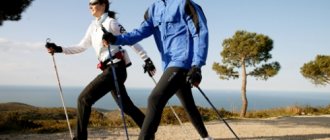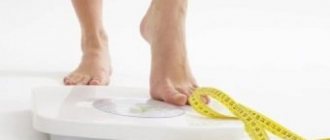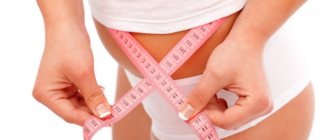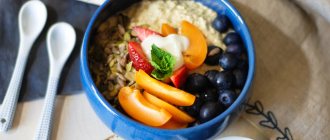What is MPC and why is it important for an athlete?
VO2 max, or maximum oxygen consumption, is how much oxygen from inhaled air your body can consume and process at its critical, maximum speed or power. That is, your body can take a certain number of milliliters of oxygen from the inhaled air in order to subsequently deliver it through the bloodstream to the working muscles and there, through a cascade of biochemical processes, transform it into energy, which you realize in the form of the same maximum speed.
The body's ability to absorb oxygen is determined by our physical and physiological parameters. This includes lung volume (or vital capacity of the lungs), heart size and its ability to push a large amount of blood in one contraction, vascular elasticity, blood quality (level of red blood cells, hemoglobin, iron, carrying this oxygen to the muscles), mitochondria (energy stations of cells) , as well as a strong central nervous system that can withstand critical speeds. Gender, age and excess weight also determine the level of BMD.
The paradox of this indicator is that it is measured under conditions of maximum work of the body, but reflects our aerobic abilities or endurance, including general endurance, that is, not at all the maximum capabilities. In turn, the number of training sessions at the MOC level is inversely proportional to the duration of the distance. That is, in marathon and ultra-marathon running, training for VO2 max is not as important as in middle-distance running (800 m, 1500 m).
In general, the theoretical logic of this indicator is such that the higher it is for a particular person, the higher the speed he can show at a distance. In addition, the higher the maximum oxygen consumption, the better the endurance, the easier long-term aerobic work is.
Basic principles of running
Running for losing weight in your legs and thighs is most effective if you adhere to the following principles:
- 1. Pulse. During jogging, your heart rate should be constantly monitored. Optimal pulsation rates are equal to 70% of the maximum number of heartbeats.
- 2. Minimum amount of glucose. Limited intake of glucose into the body is made possible by following a special diet. It is ideal if a run is preceded by a couple of days of a diet containing a small amount of carbohydrates, and after 3-4 hours this nutrient is replenished to normal levels. This principle is a mandatory requirement for athletes involved in running at a professional level.
- 3. Optimal training duration. Information about this running criterion differs in different sources. In this case, the generally accepted duration of running sessions is equal to 20-90 minutes. The average running efficiency is considered to be a workout lasting about an hour. You should adhere to a gradual habituation to long runs. To do this, they need to devote a couple of days a week. Jogging is considered effective if after it 30 grams of fat are burned.
Is it possible to improve your IPC level?
The MOC of the average healthy trained person can reach 60-65 ml/kg/min. But it is believed that the MIC indicator is a value given to a specific person by nature, although it can still be developed to a certain level. And you can successfully develop the body itself at a certain level of MIC for quite a long time and grow in results.
In our working muscles, not all muscle fibers are involved in work. The body is not its own enemy in order to spend 100 percent of the pool of muscle fibers on a low-intensity, by its standards, lifestyle and even “feed” them with energy.
So, if you periodically “pull” the body with extreme loads (as well as strength training), then the number of working muscle fibers will increase, and, consequently, their nutrition will increase. That is, the body will be forced to adapt and expand its boundaries of speed and endurance with a constant VO2 max, especially if you have reached its natural limit.
MOC is not important in itself, but how you use it in training, that is, what speed you have at the level of this indicator, and how to increase it. In running, this indicator is very important and reflects the athlete’s performance and his potential at average distances of 1500-5000 meters.
The higher the level of the athlete, the higher his MPC. However, with equal MOC values, it is not at all necessary that athletes will run the same. And with unequal IPC values, it does not mean at all that an athlete with a higher indicator will be faster than another. This may depend on the muscular system, the nervous system, the vascular system and other factors.
What should be the maximum oxygen consumption?
You shouldn’t get hung up on this notorious MPC figure. It is much more important to train certain qualities that are needed at a particular distance, and a growing (or not growing) MPC as a certain point of control of your trained (or untrained) functional capabilities will be one of the beacons of quality.
The qualities presented to the body by a particular distance are indicators such as running economy, special endurance, strength endurance, speed endurance, speed itself, etc. It is from the set of trainings for these qualities (and they are all measurable) that your result is formed. This is an amazingly voluminous job!
How to develop endurance in running
That is, in improving results at a certain distance, many parameters go together, and one depends so much on the other that it would be strange to hear from a coach or athlete - and this also happens - the following phrase: “Today we are training MPC.” Or: “How are you working to improve your IPC?”
A much more logical statement would be: “Today we are doing segments (interval training) at the MPC level to improve speed endurance in the half marathon. And we measured the MIC in the laboratory, and now we can rely on this data in order to develop our body.”
And if we talk about beginning runners, then the MOC indicator for them is not at all objective and approaches the level of PANO - the threshold of anaerobic metabolism. By developing the body with basic training (cross-country running at a low heart rate, strengthening target muscles, joints and ligaments), we simultaneously develop all indicators, including VO2 max, so it is not at all necessary to conduct special interval training.
How is MIC measured?
There are so-called absolute and relative values for measuring maximum oxygen consumption. The absolute indicator is expressed in milliliters per minute, that is, this is the largest amount of oxygen in milliliters that a person can consume in 1 minute. The average healthy person who does not engage in sports consumes 3200-3500 ml/min; for those involved in sports, the MOC reaches 6000 ml/min.
Absolute MIC indicators are directly related to the body size (weight) of a person. Therefore, rowers, swimmers, cyclists, and speed skaters have the highest MPC values. And it is in these sports that absolute MPC indicators are of greatest importance for physiological assessment.
Relative MOC indicators in highly qualified athletes are inversely related to body weight and are expressed in milliliters per kilogram of body weight per minute (ml/kg/min). The fact is that when running and walking, a vertical movement of body weight is performed, and, therefore, other things being equal, the greater the weight of the athlete, the greater the work he does. Therefore, long-distance runners have a relatively low body weight. So sometimes, to increase your MOC and, as a result, to improve your performance, it is enough to lose weight, especially if you are clearly overweight.
Shoes, clothing and food
An important task for successful training is choosing the right shoes and comfortable clothes:
- When choosing sports shoes,
you must take into account the specifics of the foot: flat feet or club feet, otherwise this can lead to injury. If there are such deviations, special shoes with increased shock absorption or enhanced foot support are selected. - It is better to try on shoes in the evening
, because during the day your feet lengthen a little. You cannot buy tight shoes; there should be a space of up to 1 cm from the end of the big toe. - Shoes should be appropriate for the type of running
you use when training. For example, shoes for sprinting should have thin soles and be lightweight, while shoes for rough terrain will require shoes that provide good traction and flexibility. - When choosing sportswear
, you should focus on comfort; it should breathe well, be light and allow internal moisture to pass through. - It is better to have several sets
of training tights or shorts and T-shirts. - When training in cold weather
, you need to wear clothes in several layers so that you can remove them partially as you warm up during training. Therefore, you need to choose clothes that are easy to remove.
To achieve good results in losing weight from running training, you must follow. It is necessary to exclude from the diet all fried foods, flour and sweets (read about how to overcome cravings for them), because they contain a lot of calories.
You should have dinner no later than 3 hours before bedtime. Fluid intake, especially plain water, should be increased to compensate for fluid lost through sweat during jogging. You can drink natural fruit drinks. Carbonated drinks and juices should be excluded from packages.
1.5 hours before training, stop eating food, and drink water only half an hour before training.
It is not recommended to eat immediately after a run; you must wait at least 2 hours.
The value of MIC in men and women
BMD values in women are on average lower than in men due to higher fat reserves and lower hemoglobin levels. Since BMD is expressed relative to body weight, the presence of fat reserves in women associated with physiology puts them at a disadvantage in this sense. Hemoglobin carries oxygen to tissues. Less hemoglobin means less oxygen per unit of blood. BMD levels in well-trained women are on average 10% lower than in well-trained men.
- Male 35 years old, leading a sedentary lifestyle – 45 ml/kg/min
- Woman 35 years old leading a sedentary lifestyle – 38 ml/kg/min
- World class 5K runner – 79 ml/kg/min
- World class 5K runner – 70 ml/kg/min
- World-class marathon runner – 73 ml/kg/min
- World-class marathon – 65 ml/kg/min
How to determine your MPC
There are several ways to determine your MPC. For example, you can run 1500m at full speed in a stadium. The result in numbers will be an indicator of your functionality at the IPC level. In the process, you can also track your heart rate while running. And continue to build on this data in training.
However, this method is not suitable for everyone. For example, if you are just starting to run, then most likely your performance will not be entirely adequate: it is not so easy to force yourself to run almost 4 laps around the stadium at maximum. This is not only the work of muscles, heart, lungs. Mainly, this is the work of the nervous system, and if it is not accustomed to endure well, then after some very short distance you simply will not be able to maintain a high pace, that is, the corresponding efforts.
Another way to determine MIC is relatively simple. Today, all smart sports watches are capable of providing this value based on calculations of your gender, age, heart rate and workouts performed. But it is unlikely that you should completely trust these data without a preliminary laboratory study and comparison of the resulting analysis from the watch and the study.
Therefore, the best option would be a stress test in the laboratory, the so-called functional test with gas analysis “to failure”.
How does this happen? They put a mask over your mouth and nose, connect it to computer sensors, and you run on a treadmill or spin an exercise bike. The load is increased in steps of speed/power and incline, or only in speed with a constant incline. Where you said “stop” will be your MOC indicator, which, in turn, corresponds to a certain pulse and blood lactate level.
The fact is that there is a certain correlation between the data of MOC, PANO and pulse zones, as well as your running pace at the level of these indicators. For example, at the MPC level, your running pace is 5 min/km, and at this speed your heart beats at a frequency of 180 beats per minute. This means that at this speed and at this heart rate you can theoretically run the same 1500 m around the stadium. However, there are a lot of caveats here: for example, are your muscles and the same nervous system ready for such a load, even if it’s a one-time one?
Lose weight by running: reviews
Running for weight loss leaves very different reviews about itself
, and most of them are positive. If you're interested in finding out whether the results represented by visible weight loss can be achieved, check out our readers' point of view.
- I’ve been practicing running in the morning to lose weight for a year and a half now, I’ve been struggling with my existing weight, and, oddly enough, successfully. Although during this time I lost only eight kilograms
, morning jogging has become a good tradition. Irina, 32 years old. - I've been running for a little over two years. The result is that I lost sixteen kilograms
. Satisfied. Marina, 47 years old. - At first I ran in the evenings, but over time I “restructured” and started running in the morning - before work. After training I feel great! Olga, 21 years old.
- For me, running for weight loss has given me simply impressive results
, so I run in the park in the summer and on a treadmill in the winter. The once blurred figure acquired feminine, slimmer outlines, which pleased me beyond words. Svetlana, 39 years old.
- Thanks to running, I not only lost two sizes
, but also restored my slightly shaky health. In the summer I run on the sports ground near my house, and in the winter on a treadmill, which I purchased specifically for this occasion. At first I was embarrassed to study - what if the neighbors saw and started laughing. But during my jogging, even one of my neighbors decided to join me. So run for your health!!! Larisa, 28 years old. - I have been practicing running to lose weight for five years now. I start jogging around the second half of April and continue until mid-October (if the weather doesn’t let me down). And although I won’t say that I had extra pounds, thanks to the exercises, my figure changed for the better - I became more fit
, or something. Since getting up early doesn’t appeal to me, I prefer to run in the evenings three times a week. Valentina, 42 years old. - When I “noticed” six kilograms of excess weight on my figure, I started doing body wraps, massages, visiting the sauna, but my actions were of no use. Then I decided to try running, and the result was not long in coming - in two and a half months the excess weight was gone
. And it took (neither more nor less) half an hour a day to run. Irina, 52 years old. - At first I ran from time to time, without thinking in any way about whether I was running correctly. There was no result. And then a friend told me how to train correctly, make the right movements with my hands, how to run, step and change the pace of running correctly. In five weeks of training I managed to lose 4.2 kg. Tatyana, 26 years old.
- I learned that to fight very heavy weight, fast walking and slow running are what you need, so I began to use this long-known method of losing weight. The modest results obtained in three weeks (three kilograms in the minus) do not upset me, but even motivate me, or something. Angelica, 19 years old.
If you want running to lose weight
has become your reliable assistant in the fight against excess weight, choose comfortable training shoes and clothes, take care of the proper organization of classes, and also write down the diet that you will follow. Believe me, preliminary preparation for jogging is one of the “building blocks” on which excellent results will subsequently be based.
The question of whether running helps you lose weight has long been closed. Now this is the most accessible and effective way to combat physical inactivity and maintain your shape. When using various diets to combat excess weight, the achieved effect often goes away after some time, since it is achieved by removing excess fluid from the body. When a person runs, he burns calories that he gets from his own fat reserves. As you train, fat goes away and weight decreases.
The reason for this is that when jogging, all human organs and muscles are involved. The body begins to work in accelerated mode, the heart has to pump blood several times faster and deliver more oxygen to the cells. And this leads to an acceleration of intracellular metabolic processes, as a result of which the energy necessary for the breakdown of fats is released.
Running activates almost all muscles in the body, including the heart muscle. The load on different muscles is different.
The main load is felt by the muscles of the legs and buttocks.
They are involved in flexion and extension of the foot and knee, and regulate the movements of the hip and knee joints. The calf muscles play a role in lifting the leg when running.
The abdominal muscles and biceps are also involved in running, but to a lesser extent.
With regular exercise during jogging, the muscles become stronger and are always in good shape.
The body consumes the necessary energy from fat reserves accumulated on the hips, abdomen and other places. As a result of regular jogging, fat from problem areas disappears along with kilograms of excess weight.
If a person does not overeat, but eats properly, supplying the body with all the substances necessary for life, then he will lose weight faster. This weight loss will be sustainable.
How to increase your MPC
You can increase your VO2 max with interval training. Interval training at the MOC level is perhaps the most difficult, primarily for the nervous system. They require fairly good physical shape and recovery time afterward. And despite the fact that such training is not very frequent in marathon training, it is still present. With them we increase the body’s ability to absorb oxygen, and also raise indicators at the level of ANNO.
Definitely, training should be personalized and built into your overall training plan based on your goals and the distance you plan to compete.
For example, you can vary the workout from 2 to 8 minutes 4-8 repetitions at the VO2 max level or slightly lower (90-95%), depending on the length of the segment, but in terms of speed this will reflect your 3000-5000 m run. Rest interval - 2-4 minutes of jogging.
In general, the best training to increase MPC, if we really want to increase it, is middle-distance competitions (the same 3000-5000 m).
How to properly run to lose weight?
Running is a natural form of movement for humans. To achieve results in getting rid of extra pounds without harming yourself, you need to approach the process wisely and follow the rules and conditions that will allow you to successfully obtain the desired result.
Conditions:
- A preliminary warm-up should be carried out
, including warming up the muscles and joints of the arms, legs and back, as well as warming up the whole body. - The running load
, if it did not exist before, should be increased gradually from small, low-intensity runs, preferably jogging for no more than 20 minutes, gradually increasing the intensity and duration of the run. - Jogging
should be regular.
To start losing weight, you must follow the rules of jogging:
- It is necessary to change the type and speed of jogging.
For example, change running to walking or switch from jogging to intense running. Fat will begin to disappear when the load is maximum. It is better to switch to it after 40 minutes of preliminary leisurely running. - Maintain
correct posture. - Hands must be free.
- Legs must be placed
on the entire foot or from heel to toe; running on toes is excluded.
When exercising, you need to monitor proper breathing and pulse using. You should inhale through your nose and exhale through your mouth and monitor the rhythm of your breathing. The pulse should not exceed the permissible norm so as not to harm the body.











